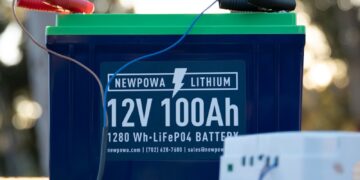The transition to a clean energy economy is at a critical juncture. As the world races to meet ambitious climate goals—such as the United States’ target of 100% carbon-free electricity by 2035—the electric grid faces unprecedented challenges. One of the most significant barriers to scaling renewable energy is the grid interconnection process—the mechanism by which new power generation and large energy consumers, like AI data centers, connect to the grid. This complex, often slow process is creating bottlenecks that threaten to stall the renewable energy revolution. In this article, we explore the interconnection challenge, its causes, its impact on renewable energy deployment, and the innovative solutions emerging to address it, with a spotlight on how companies like Pacifico Energy are helping to uncork this bottleneck.
The Growing Importance of Interconnection
Grid interconnection is the linchpin of renewable energy deployment. It’s the process through which new energy projects—whether solar farms, wind turbines, or battery storage systems—gain permission to connect to the transmission network. Similarly, large energy consumers, such as data centers powering artificial intelligence (AI), must secure interconnection to draw power from the grid. The process involves rigorous technical studies to assess a project’s impact on grid reliability, often requiring costly infrastructure upgrades to ensure stability.
Historically, interconnection challenges simmered quietly in the background. However, the surge in clean energy demand, coupled with the explosive growth of AI-driven data centers, has brought the issue into sharp focus. According to Lawrence Berkeley National Laboratory (LBNL), over 2.6 terawatts of generation capacity—more than twice the entire U.S. installed capacity—are currently waiting in interconnection queues. Approximately 80% of this queued capacity is low-carbon, yet only 19% of projects queued between 2000 and 2018 reached commercial operation by the end of 2023.
Why Interconnection Is So Challenging
Here are some of the systemic challenges:
1. Data Fragmentation and Inaccessibility
Grid data is fragmented and difficult to access. Developers often submit speculative projects to gain queue positions. New platforms like Interconnection.fyi are helping increase transparency.
2. Outdated Tools and Manual Processes
Legacy modeling tools like PSS®E and PSCAD are not scalable for modern grid needs. Many interconnection studies remain manually processed.
3. Cost Uncertainty
Unexpected upgrade costs are common. LBNL found interconnection costs have doubled in recent years, hurting project economics.
4. Workforce Constraints
A shortage of power system engineers has led to slower interconnection timelines.
5. Explosive Load Growth
AI data centers, electrification, and industrial decarbonization are causing a surge in demand. Utilities like Dominion Energy are fielding gigawatt-scale load requests.
The Transmission Planning Conundrum
Interconnection delays are tightly linked to slow transmission expansion. While the DOE says we need a 64% increase in transmission, only 55 miles of new high-voltage lines were added in 2023. Recent reforms like FERC Order 2023 and Order 1920 aim to streamline processes, but more coordination is needed.
The Load Growth Challenge: AI Data Centers and ESG Goals
AI data centers are reshaping the energy grid. These facilities consume 3–5x more power than traditional centers. Let’s explore four companies setting the standard for ESG and clean energy strategies:
Iron Mountain Data Centers
Iron Mountain is a leader in sustainability, with 100% renewable energy usage across its global data center footprint. Through power purchase agreements (PPAs) and real-time carbon tracking, Iron Mountain is working toward 24/7 clean energy matching. It has also partnered with local utilities to expedite interconnection studies and enable faster clean energy adoption.
Cologix
Cologix, a leading interconnection and hyperscale edge provider, is expanding its footprint across North America. The company recently announced a major expansion in Silicon Valley and Ashburn, strategically co-located near renewable-rich grids. Cologix is integrating renewable PPAs and on-site battery storage to meet customer ESG targets while relieving stress on interconnection queues.
Equinix
Equinix is a global pioneer in green data infrastructure. It achieved 95% renewable coverage in 2024 and is building the first clean energy microgrid for its SV11 data center in Silicon Valley. Equinix’s Future First sustainability strategy includes working with regional grid operators to accelerate interconnection timelines through better forecasting and regional planning collaboration.
QTS Realty Trust
QTS is implementing AI-powered energy efficiency optimization and working with developers to source renewable power near load zones. Its new Chicago mega-campus includes battery storage and solar-ready infrastructure, designed to reduce grid impact and streamline interconnection timelines.
Innovative Solutions on the Horizon
New strategies and tools are emerging:
1. Data Layers for Transparency
Simulators like Australia’s AEMO tool and U.S. startups are offering grid visualizations to inform siting decisions.
2. Advanced Grid Modeling Tools
Automating EMT and stability studies is key to speeding approvals for renewable projects.
3. Workflow Automation
Queue management software is streamlining processes for utilities and ISOs.
4. Data Center Optimization
Advanced cooling and energy reuse strategies are helping data centers reduce load intensity, easing interconnection stress.
Policy and Regulatory Outlook
Bipartisan momentum is building for transmission reform. The DOE’s $30 million AI-driven interconnection initiative and the GRID Power Act (H.R. 9801) show federal attention is growing. However, meaningful coordination between federal, state, and regional authorities is still lacking.
Pacifico Energy: Leading the Charge
Pacifico Energy is actively working to solve the interconnection puzzle. As a developer of utility-scale solar, wind, and battery storage, Pacifico focuses on:
- Advanced data analytics to navigate grid constraints
- Strategic site selection near high-capacity zones
- Collaboration with utilities and ISOs
- Supporting high-load customers, including AI data centers, with tailored clean energy plans
Pacifico Energy’s projects help bridge the gap between clean generation and large-scale demand, with a strong focus on environmental justice, energy equity, and stakeholder engagement.
Conclusion
The interconnection bottleneck is one of the most urgent obstacles in the clean energy transition. But with innovation, collaboration, and policy alignment, it can be overcome. Data centers like Iron Mountain, Cologix, Equinix, and QTS are showing what’s possible. Developers like Pacifico Energy are building the bridges—both technical and regulatory—that can connect our clean energy future to the grid of today.
The time to act is now. Because the grid isn’t just infrastructure—it’s the backbone of a sustainable, AI-powered, low-carbon world.



















